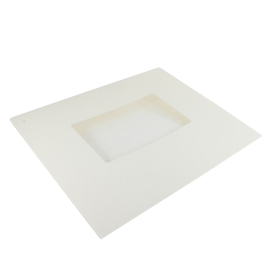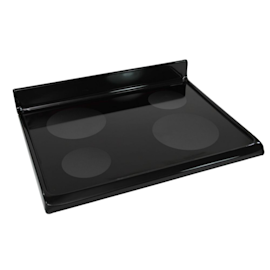What are the main parts of a stove?


Whether you have a gas stove or an electric one, it will have some parts that are common to all types of stoves. All stoves have oven controls that perform the same functions for gas and electric models. Oven door components also don’t differ in gas and electric ranges or stoves.
Range components that do differ in gas and electric stoves produce the heat for the surface burners and the oven.
We’ll describe the oven parts that are common to all ranges then define stove parts for gas and electric models.
Range parts common to gas and electric stoves
Electronic oven control board
The electronic oven control (EOC) board governs the timing and execution of oven functions in the range. It's usually attached to the control panel and often has a digital display clock mounted on the front of its housing.
Here’s a video that shows how to replace the electronic oven control board in a common range:
Control panel
The control panel houses the control keypad, temperature display and other displays. Switches and the electronic control board are attached to the control panel.
Oven temperature sensor probe
The oven temperature sensor probe is at the top of the back of the oven and detects the temperature inside the oven. Temperature is measured by the change in resistance in this sensor, which is why the sensor is also referred to as a Resistance Temperature Detector (RTD). A wire harness connects the oven temperature sensor probe to the electronic control board so the sensor can communicate the oven temperature to the control board. View our How to replace an oven temperature sensor video to see how to replace the oven temperature sensor probe in a common range.
Door light switch
The oven door light switch is a plunger switch on the frame of the oven above the opening to the oven. The oven door pushes the oven light switch plunger in when the door is closed to turn the light off. When the door is open, the plunger is released and the light is on. Watch our How to replace an oven door switch video to find out how to replace the oven door switch in a common range.
Outer oven door glass panel
The outer oven door glass panel is the heat-resistant piece of glass that forms the outer part of the oven door. Our Replacing the Door Glass video shows how install a new outer oven door glass panel on common ranges.
Oven door hinge
The hinges on an oven door control the rate at which the door opens and also allow the door to stay open at an angle. Hinges are usually installed in pairs so the hinges and tension springs match, ensuring the smooth operation of the door. The Replacing Oven Door Hinges video shows how to install new door hinges on common types of stoves.
Oven door lock assembly
The oven door lock assembly is a safety mechanism that prevents accidental burns and oven fires by latching the door shut during self-cleaning. The door unlocks when the oven cools to a safe temperature (usually less than 200 degrees F). It's also used on ovens with the child lock-out feature. The assembly includes the lock and switches that detect whether the door is locked. Watch our Replacing an Oven Door Lock video to see how to install a new oven door lock assembly on common types of ranges.
Common parts for electric ranges
Surface element
A surface element provides heat for a specific area on the cooktop of the stove. It's controlled by a surface element switch (also called a surface burner switch or infinite burner switch).
Surface elements vary by range model. Most stoves have one of these 3 types of surface elements:
Radiant surface element. This type of element is mounted on the bottom of a ceramic glass cooktop. The radiant surface element has a limit switch that periodically shuts off the element to protect the ceramic glass cooktop from overheating. The Replacing a Radiant Surface Eleme nt video shows how to replace this type of element in a common electric range.
Coil surface element. Also known as a coil element, this element plugs into the terminal block mounted under the cooktop. The coil surface element sits a drip pan. Some coil surface elements have a limiter switch that prevents the coil element from overheating. Watch our Testing coil surface elements with limiter switches video to see how to test a coil surface element with a limiter switch when it’s not heating.
Solid disc element. Also called a disc element, this element is solid metal that's mounted on the cooktop of an electric range for surface cooking. The cookware sits directly on the solid metal disc element. Ribbon heating coils under the solid metal disc transmit heat to the surface of the disc and then to the cookware. Disc elements aren’t as common as the other types of surface elements.
Surface element switch
The surface element switch (also called a surface burner switch or infinite burner switch) is mounted on the control panel of an electric range or stove. It's an electrical switch that turns on and off the associated surface element and also controls the how much heat the element produces.
Our Radiant surface element on range not working video shows how to test the surface element switch when a surface element on your stove isn’t heating. The Replacing a Range Surface Element Control Switch video shows how to replace the burner switch if it’s bad.
Ceramic glass cooktop
The ceramic glass cooktop for an electric range provides a flat, smooth cooking surface. The radiant elements attached under the cooktop provide heat. Watch our Replacing a Glass Cooktop video to see how to install a new glass cooktop on your electric range.
Bake element
The bake element is at the bottom of the oven and provides heat for baking. Some bake elements are visible while others are positioned under the bottom oven panel. You can follow the repair procedure in one of these videos to replace the bake element in your electric range:
Broil element
The broil element is at the top of an electric oven interior and provides the heat for the broiling. Follow the step-by-step procedure in the Replacing a Broil Element video to install a new broil element in your range.
Common parts for gas stoves
Oven igniter
In a gas oven, the oven igniter is a glow bar that glows white hot to ignite the gas for the oven burner. It's in a series electrical circuit with the safety gas valve. The safety gas valve opens when it detects that the igniter is hot enough to light the gas. Some gas ovens have a separate bake igniter and broiler igniter, instead of a single oven igniter for the combination bake/broil burner found in some ranges.
Use the troubleshooting tips in the Oven won't heat: troubleshooting gas range problems video to figure out why the oven won’t heat in your gas range. You’ll often find that the oven igniter needs replacing when a gas oven won’t heat. Follow the step-by-step procedure in our Replacing an Oven Igniter video when you need to install a new igniter.
Oven safety gas valve
The oven safety gas valve controls gas flow to the bake and broil burners in the oven. The troubleshooting video in the link above for a gas oven that won’t heat describes the operation of the safety gas valve.
Gas pressure regulator
The pressure regulator limits the incoming gas pressure to a safe and constant level for the burners in a gas range.
Surface burner control valve
A surface burner control valve controls gas flow going to a gas surface burner. A spark switch on the stem of the control valve initiates that spark on the burner to ignite the gas when you turn on a surface burner.
Spark igniter switch
The spark igniter switch, or surface burner igniter, provides an ignition spark to light a surface gas burner. It's an insulated electrode that sends a spark across to the burner head when voltage is supplied by the spark module. The igniter sparks or "ticks" when the control knob is turned to the "Lite" position. Follow the steps in the How to replace a range spark igniter switch repair guide to install a new spark igniter switch.
Spark igniter electrode
The spark igniter electrode provides an ignition spark to light a surface gas burner. It's an insulated electrode that sends a spark to the burner head when the spark module provides voltage. It sparks with a ticking sound when you turn the burner switch on a control knob to the Lite position.
Spark module
The spark module receives signals from the burner switches. When a burner control knob is in the Lite position, the spark module provides voltage to the burner igniter electrodes and lights the surface gas burner. Follow the step-by-step procedure in the How to replace a range spark module repair guide to install a new spark module in your gas range.
Replacing parts in your range can get complicated and diagnosis of range failures can be challenging. When you’re not completely confident that you can safely and effectively diagnose and repair your range on your own, schedule an appliance repair technician to fix your range.
Symptoms for electric ranges
Main causes: faulty surface element, burner control switch failure, temperature limiter not working properly, loose wiri…
Main causes: impact from dropping an item on the glass surface, ceramic glass surface flaw, surface element temperature …
Repair guides for electric ranges

How to replace a range hidden bake element
These step-by-step instructions guide you through replacing the oven hidden bake element in an electric range.…

How to replace an electric range oven door outer glass panel
Learn how to replace a damaged outer window panel on your oven door with these step-by-step instructions. …

How to replace a range glass cooktop
These step-by-step instructions explain how to replace a damaged ceramic glass cooktop on an electric range. …
Articles and videos for electric ranges

Learn about the differences between cooking on gas and electric stoves.…

Learn about all the convenient features on our Sears PartsDirect website that make your parts purchases easier.…

Get answers to frequently asked questions about Sears and Sears PartsDirect.…